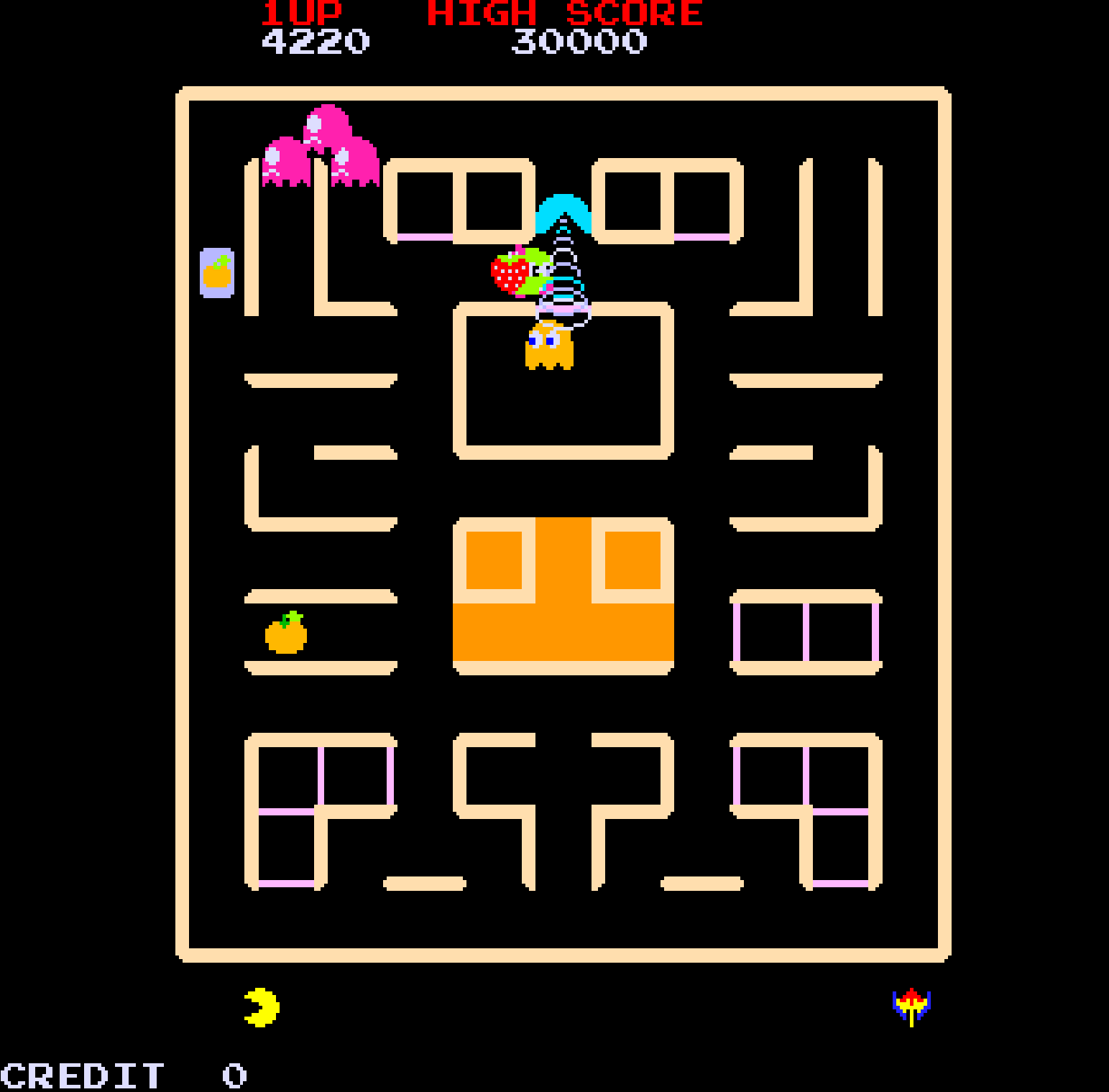Introduction
Released in 1983 by Namco, Pac & Pal is one of the more unusual entries in the Pac-Man arcade lineup. Building on the maze-chase formula, the game introduced a companion character named Miru (the “Pal”), who helps collect items but can also work against the player. With its card-flipping mechanic, new item-based power-ups, and fresh take on maze design, Pac & Pal experimented boldly with the franchise, though it never saw wide release outside Japan.
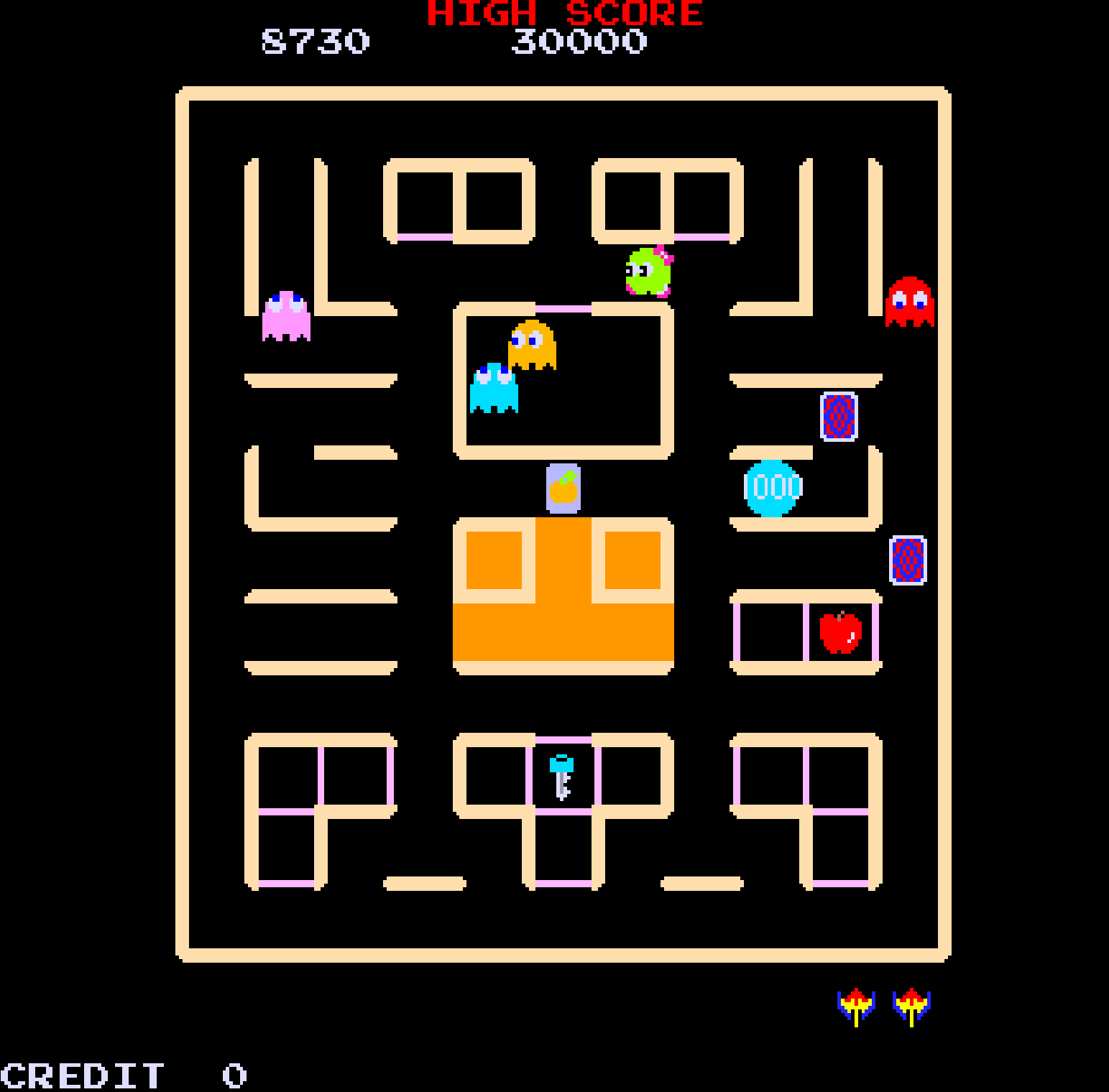
Development and History
- Developer: Namco
- Publisher: Namco
- Release Date: 1983 (Japan)
Following Super Pac-Man (1982), Namco continued to refine and experiment with the Pac-Man formula. Pac & Pal borrowed the door-and-key structure of Super Pac-Man but replaced keys with face-down cards that unlock items when flipped. The new “Pal” character, Miru, would also pick up these items and attempt to carry them back to the ghost pen, forcing players to intercept her to score points. Although the game tested in arcades overseas, it was officially released only in Japan. In later years, it appeared on compilations such as Namco Museum, allowing international players to experience this rare spin-off.
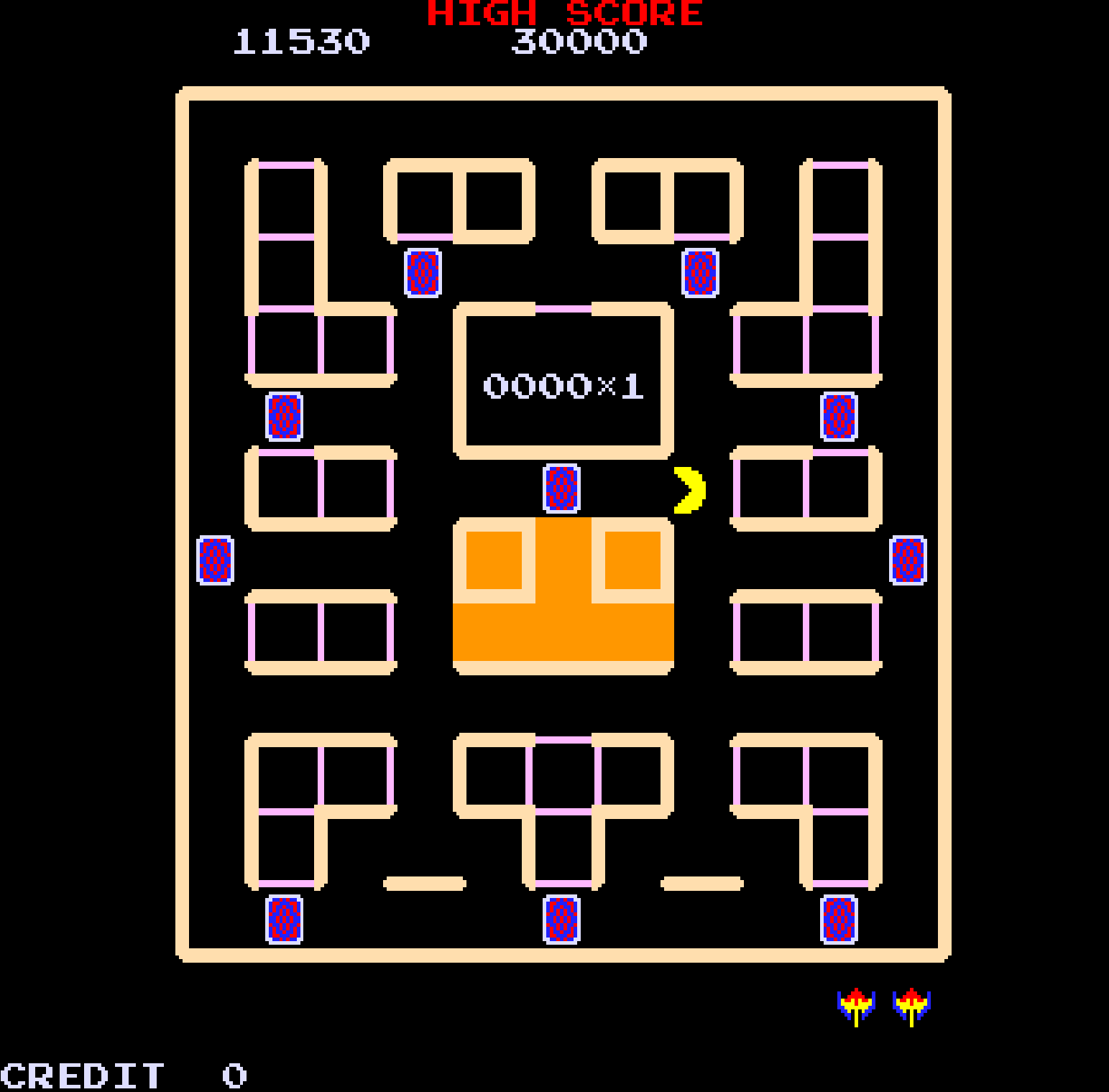
Gameplay Video
Gameplay and Mechanics
Maze-Chase Formula: Players guide Pac-Man through a maze, flipping cards to reveal collectible items.
Miru the Pal: The AI companion collects items as well, reducing your score if she succeeds, but acting as a strategic twist.
Item Power-Ups: Instead of Power Pellets, players gain temporary abilities by collecting items such as Galaxian flagships, trumpets, or cars—each stunning or disabling ghosts in different ways.
Ghosts: Blinky, Pinky, Inky, and Clyde return with their classic chase behavior, still the main threat in the maze.
Scoring: Points are earned from collecting items, intercepting Miru, and defeating ghosts using special abilities.
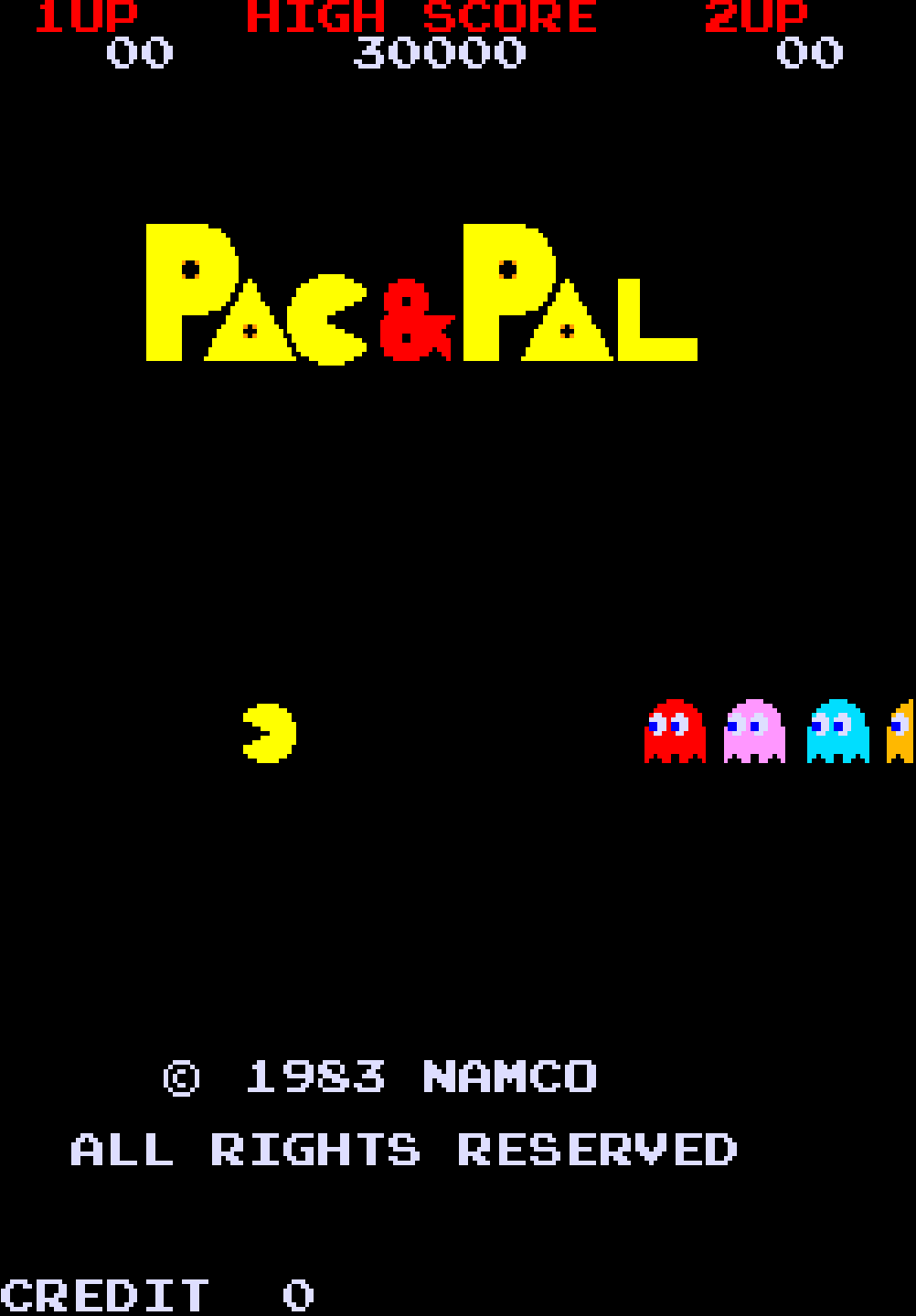
Cultural Impact and Legacy
While Pac & Pal was not a major commercial hit, it represents Namco’s willingness to take risks with its most famous franchise. The introduction of Miru marked one of the first times an arcade game experimented with an AI-controlled “partner” that both helps and hinders gameplay. Its relative obscurity outside Japan gave it cult status among Pac-Man enthusiasts. The game’s unique mechanics resurfaced in spiritual successors like Pac-Man & Chomp Chomp and in re-releases on Namco compilations, where modern players could finally experience this experimental chapter in Pac-Man’s history.
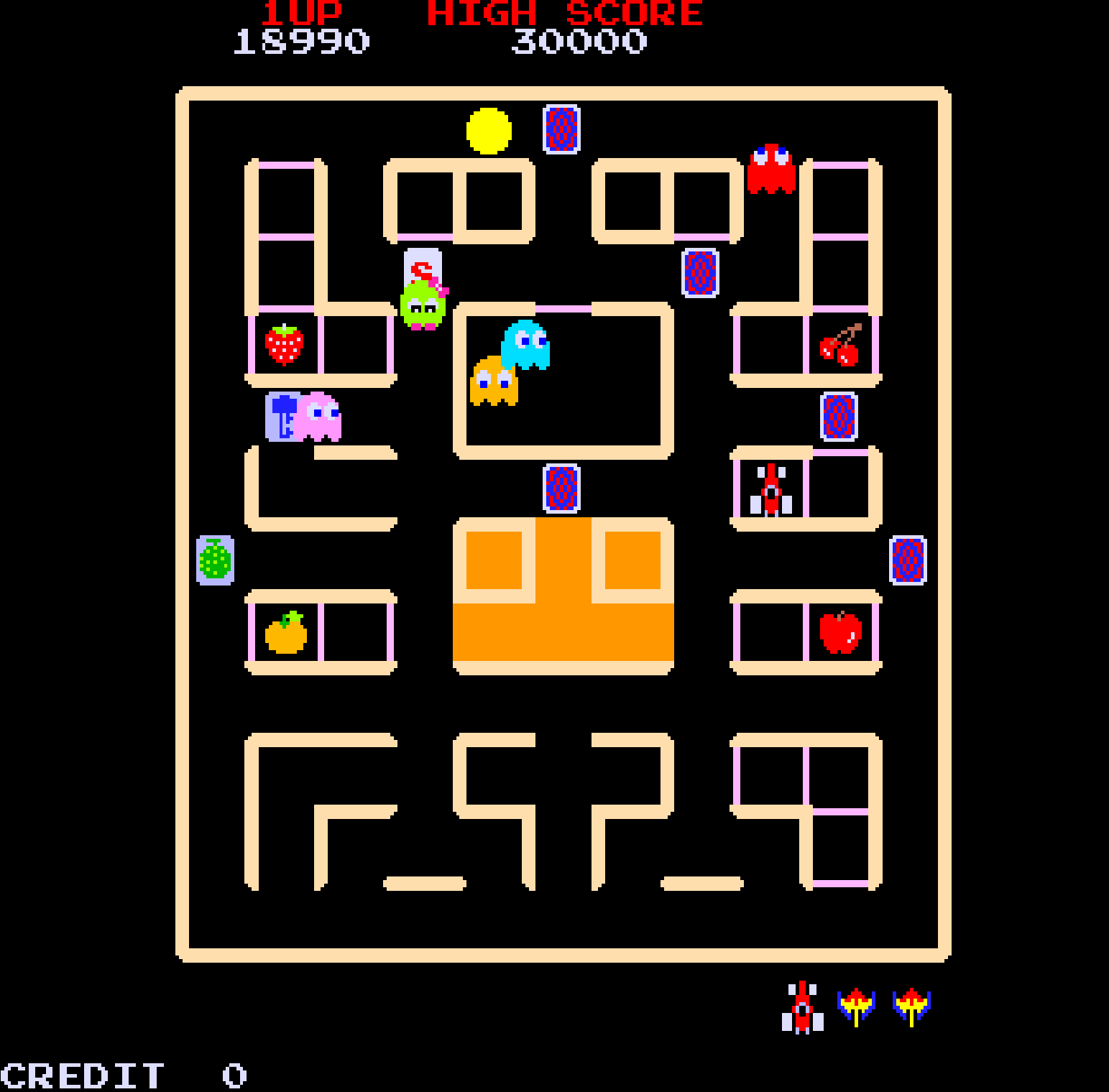
Fun Facts
- Miru was sometimes localized as “Chomp Chomp” in prototype builds outside Japan.
- The card-flipping mechanic replaced keys from Super Pac-Man as the method of unlocking items.
- Several collectible items reference other Namco games, including the Galaxian flagship.
- The game was officially released only in Japan, but test units reached North America and Europe.
- Pac & Pal has appeared in collections like Namco Museum Vol. 2 for PlayStation and the Nintendo Switch Arcade Archives series.
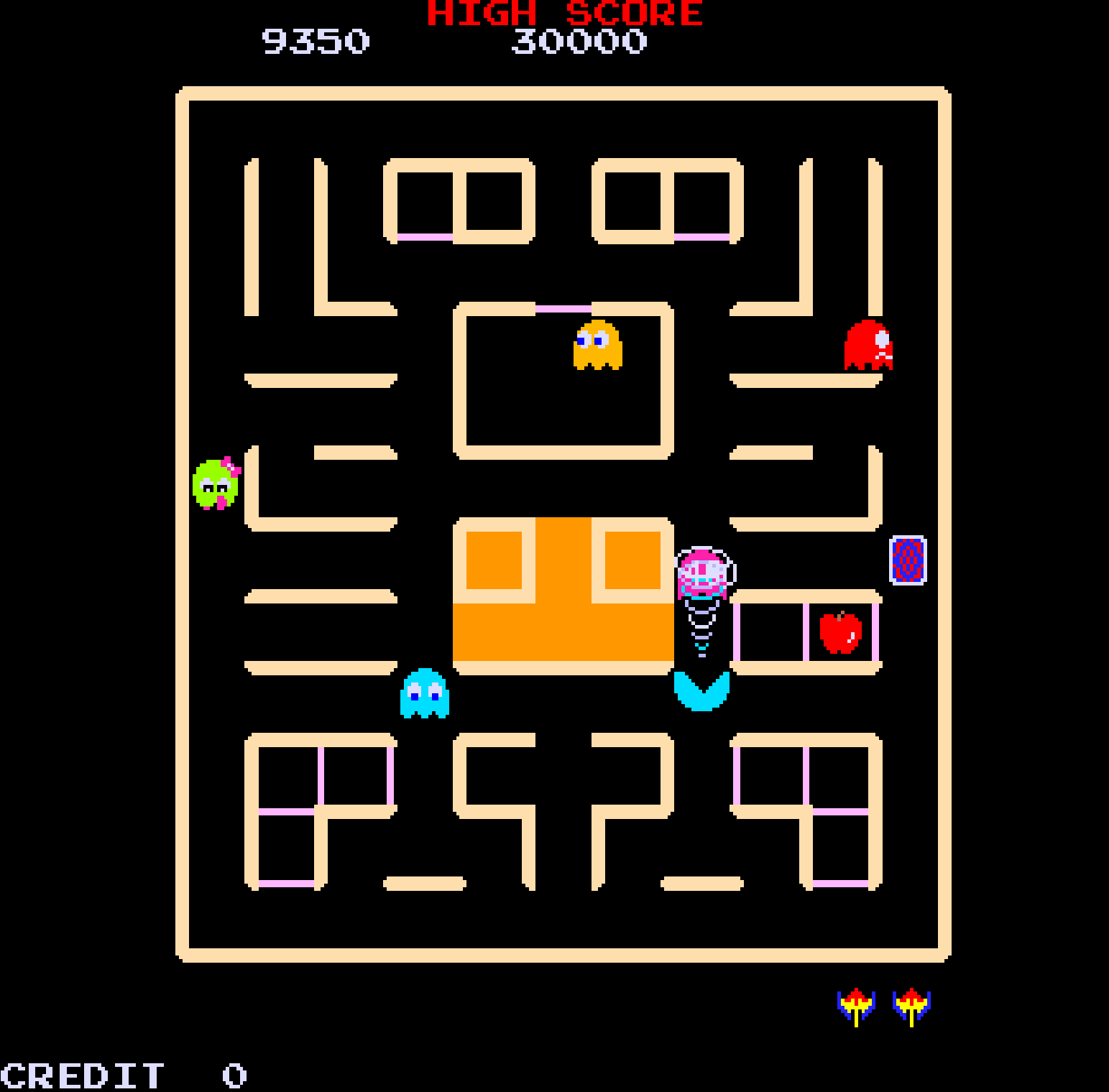
Conclusion
Though often overshadowed by more successful Pac-Man titles, Pac & Pal is an important example of Namco’s creative experimentation during the arcade boom. Its use of Miru, card-flipping, and item-based powers made it stand out from other entries, and today it is remembered as a quirky, rare gem in the Pac-Man legacy.
Want to Go Deeper Into Arcade History?
If this game left you craving more, dive into the complete stories behind some of the most iconic arcade genres and franchises. These articles explore the rise, innovation, and legacy of the games that shaped arcade culture:
- Top 25 Hidden Gem Arcade Games of All Time - Unearth the overlooked classics that still shine bright for arcade enthusiasts today
- Top 25 Beat ’Em Up Arcade Games of All Time – Discover the ultimate ranking of the greatest beat ’em ups ever to hit arcades
- The History of Beat ’Em Up Arcade Games – From Double Dragon to Final Fight, here’s how brawlers ruled the late ’80s.
- Donkey Kong’s Rise to Fame: How a Desperate Bet Created a Gaming Legend – The untold story of how Nintendo turned failure into a global icon, launching Mario, Miyamoto, and a new era of arcade storytelling
- The Economics of Arcade Gaming: The Golden Age of Coin-Op – This article explores the full arc of arcade economics: the explosive rise, the industry-shaking crash, and the waves of reinvention that kept the business alive
- The Complete History of Mortal Kombat Arcade – How a gritty fighter became a pop culture phenomenon.

